
Thai Manne Vanakkam - Movie Songs
PARA VOCÊ OUVIR AS OUTRAS MÚSICAS QUE ESTÃO NO FINAL DESTA PÁGINA
VOCÊ PRECISA PAUSAR ESTE SCRAP COM MINHA MENSAGEM.
YOU TO LISTEN TO OTHER SONGS THAT ARE AT THE END OF THIS PAGE
YOU NEED TO PAUSE THIS MESSAGE TO MY SCRAP
A letter for You - ScrapU
A R Rahman great singer
A R Rahman grande cantor

Independence Day

Orkut Scraps


v4orkut.com


v4orkut.com
Independence Day
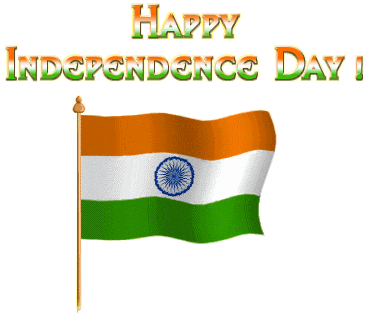
Scraps for Orkut



v4orkut.com

Get Orkut Scraps @ 123orkut.com
DesiComments.com | Independence Day | Forward this Picture
DesiComments.com | Independence Day | Forward this Picture
DesiComments.com | Independence Day | Forward this Picture
DesiComments.com | Independence Day | Forward this Picture
DesiComments.com | Independence Day | Forward this Picture
BIOGRAFIA
Dia da República (Índia)
Origem: Wikipédia, a enciclopédia livre
Dia da República

on WN Network delivers the latest Videos and Editable pages for News & Events, including Entertainment, Music, Sports, Science and more, Sign up
and share your playlists.
TRANSLATION= TRADUçÃO:
na Rede WN oferece os mais recentes vídeos e páginas editáveis para Notícias & Eventos, incluindo Entretenimento, Música, Esportes, Ciência e mais, Registe-se e compartilhar suas playlists.
BEAUTIFUL MUSIC, NEWS, ENTERTAINMENT AND MUCH MORE ....
CLICK TO SEE MY BEAUTIFUL AND Links PLAYLISTS. WHEN YOU SEE THE END RETURN TO THE PREVIOUS PAGE, GO BACK TO THE BLOG
BEAUTIFUL MUSIC, NEWS, ENTERTAINMENT AND MUCH MORE ....
CLICK TO SEE MY BEAUTIFUL AND Links PLAYLISTS. WHEN YOU SEE THE END RETURN TO THE PREVIOUS PAGE, GO BACK TO THE BLOG
LINDAS MÚSICAS ,NOTÍCIAS,ENTRETENIMENTO E MUITO MAIS....
CLICK NOS LINKS E VEJAM MINHA LINDAS PLAYLISTS .QUANDO VOCÊ TERMINAR DE VER VOLTE PARA A PÁGINA ANTERIOR ,VOLTE PARA O BLOG
World Cup 2014 Brasil Official Theme Song
World Cup 2014 Brasil Official Theme Song


O grupo Roupa Nova está comemorando seus 30 anos de carreira.
Eu não diria apenas carreira mais sim 30 anos de puro sucesso.
Com milhares de fãs por todo o país, ninguém quer perder um show do Roupa Nova.
New Clothes The group is celebrating its 30-year career.
I would not say yes just career more 30 years of pure success.
With thousands of fans across the country, nobody wants to lose a show's New Clothes.
Amar É Roupa Nova
Amar É Roupa Nova
A Paz Roupa Nova
A Paz Roupa Nova
Roupa Nova Volta Pra Mim
Roupa Nova Volta Pra Mim
2009 Evento Da India Em São Paulo
Evento Da India Em São Paulo
India Republic Day Preparations
India Republic Day Preparations
Jan 26th, Happy Republic Day
Jan 26th, Happy Republic Day
Republic Day Of India
Republic Day Of India
Ar Rahman Jana Gana Mana Instrumental
Ar Rahman Jana Gana Mana Instrumental
Jana Gana Mana By Ar Rahman India's National Anthem Instrumental + Vocal + Subtitles
Jana Gana Mana By Ar Rahman India's National Anthem Instrumental + Vocal + Subtitles
Jana Gana Mana Ar Rahman And Various Artists
Jana Gana Mana Ar Rahman And Various Artists
Ar Rahman Maa Tujhe Salaam Vande Mataram With Lyrics + English Translation
Ar Rahman Maa Tujhe Salaam Vande Mataram With Lyrics + English Translation
DesiComments.com | Independence Day | Forward this Picture
Soldados do Regimento de Madras durante a parada anual do Dia da República em 2004
Observado pela Índia
Tipo Nacional
Data 26 de janeiro
Desfiles celebrações, distribuição de doces nas escolas e programas culturais
O Dia da República da Índia comemora a data em que a Constituição da Índia entrou em vigor a substituição do Governo da Índia Act 1935 como o documento que rege da Índia em 26 de janeiro de 1950 [1].
A 26 de janeiro foi escolhido para homenagear a memória da declaração de independência de 1930. É um dos três feriados nacionais na Índia, e enquanto o desfile principal, República Day Parade acontece no Rajpath, na capital nacional da Nova Delhi, onde o presidente vê o desfile de capitais, o estado também terá celebrações seu estado.
Embora a Índia obteve sua independência em 15 de agosto de 1947, que ainda não tinha uma constituição permanente, em vez disso, suas leis foram baseadas no Governo modificada colonial da Índia Act de 1935, eo país era um Dominion, com George VI como chefe de Estado e Earl Mountbatten como Governador Geral. Em 28 de agosto de 1947, o Comitê de Redação foi designado para redigir uma constituição permanente, com Bhimrao Ramji Ambedkar como presidente. Enquanto o Dia da Independência da Índia, celebra a sua liberdade do domínio britânico, o Dia da República comemora a entrada em vigor da sua constituição.
Um projecto de Constituição foi elaborado pela comissão e submetido à Assembléia em 4 de novembro de 1947. A Assembleia reuniu, em sessões abertas ao público, por 166 dias, distribuídos por um período de dois anos, 11 meses e 18 dias antes da adopção da Constituição. Depois de muitas deliberações e algumas modificações, o 308 membros da Assembléia assinou dois escritos à mão, cópia do documento (um de cada em Hindi e Inglês) em 24 de janeiro de 1950. Dois dias depois, a Constituição da Índia tornou-se o direito de todas as terras indígenas. A Constituição da Índia foi aprovada em 26 de novembro de 1949, 10:18 IST, mas entrou em vigor completamente só em 26 de janeiro de 1950. Na sequência de eleições em 21 de janeiro de 1950, Rajendra Prasad foi eleito como o presidente da Índia. O Congresso Nacional Indiano e outras partes foram celebrando 26 de janeiro como um símbolo de independência, mesmo antes de a Índia realmente tornou-se independente. Assim, aplicando-se a constituição em 26 de Janeiro, para marcar e respeito 26 de Janeiro e a luta pela liberdade e os combatentes da liberdade.
O mecanismo de alteração foi elogiado até mesmo no momento da introdução de Ambedkar com as seguintes palavras: "Podemos, portanto, dizer com segurança que a federação indiana não sofrerão as falhas de rigidez ou legalismo Sua característica distinta é que ela é uma federação flexível..
"Os três mecanismos do sistema derivado da Assembléia, ao contrário das previsões, fizeram a constituição flexível, ao mesmo tempo protegidos os direitos dos Estados. Eles têm trabalhado melhor do que o processo de alteração em qualquer outro país onde Federalismo e os britânicos sistema parlamentar em conjunto formaram a base da constituição. "
O que Sir Anthony Eden, o primeiro-ministro do Reino Unido (abril 1955 a janeiro de 1957), disse na época do surgimento da República indiana é relevante neste contexto. Ele disse: "De todas as experiências em governo, que tem sido tentado desde o início do tempo, acredito que o risco para o governo indiano parlamentar é a mais emocionante. Um vasto subcontinente está tentando se aplicam aos seus dezenas de milhares de milhões um sistema de democracia livre ... É uma coisa corajosa para tentar fazê-lo. O empreendimento índio não é uma pálida imitação da nossa prática em casa, mas uma reprodução ampliada e multiplicada em uma escala que nunca sonhou. Se for bem sucedido , sua influência sobre a Ásia é incalculável para o bem. Seja qual for o resultado, devemos honrar aqueles que tentar. "
Ainda mais significativa foi a opinião expressa por uma autoridade americana Constitucional, Granville Austin, que escreveu que o que a Assembléia Constituinte começou indiana foi "talvez o maior risco político, desde que se originou na Filadélfia, em 1787."
Austin também descreveu a Constituição indiana como "primeiro e acima de tudo um documento social." ... "A maioria das disposições constitucionais da Índia são diretamente chegaram a promover o objetivo da revolução social ou a tentativa de promover essa revolução através da criação de condições necessárias para sua realização."
Índice [esconder]
1 Celebrações
2 Retiro Beating
3 O principal convidado
4 Veja também
5 Referências
Celebrações
Agni-II de mísseis na República Day Parade 2004
Para marcar a importância da ocasião, a cada ano um grande desfile é realizado na capital, Nova Delhi, da Colina Raisina perto do Rashtrapati Bhavan (Palácio Presidencial), ao longo do Rajpath passado, a Índia Gate. Antes de seu início, o primeiro-ministro coloca uma coroa de flores no Jawan Amar Jyoti, um memorial aos soldados desconhecidos na porta de India em uma extremidade do Rajpath, que é seguido por dois minutos de silêncio em memória de soldados desconhecidos. Posteriormente, ele chega ao palanque principal em Rajpath para se juntar outros dignitários, posteriormente, o Presidente chega junto com o principal convidado da ocasião. Primeiro ele se desenrola a bandeira nacional, como o Hino Nacional é tocado, e uma salva de 21 tiros é dada. Em seguida, prêmios importantes como o Chakra Chakra Ashok e Kirti são dadas pelo Presidente, antes de os regimentos das Forças Armadas iniciar seu desfile.
Os regimentos diferentes do Exército indiano, Marinha e Força Aérea passado marcha em toda sua nobreza e condecorações oficiais. O Presidente da Índia, que é o Comandante-em-chefe das Forças Armadas indianas, leva a saudação. Carros alegóricos exibindo as culturas de vários estados e regiões da Índia estão no grande desfile, que é transmitido a nível nacional na televisão e rádio. Também faz parte do desfile são as crianças que ganhar o Prêmio Nacional Bravery para o ano. [2] O desfile também inclui outras manifestações vibrantes e carros alegóricos e tradicionalmente termina com um sobrevoo por aviões da Força Aérea Indiana.
Comemorações também são realizadas nas capitais dos estados, onde o Governador do Estado desfralda a bandeira nacional. Se o Governador do Estado está doente, ou está indisponível por algum motivo, o Ministro-Chefe do Estado assume a honra de desfraldar a Bandeira Nacional da Índia.
Hoje, o Dia da República é comemorada com muito entusiasmo em todo o país e especialmente na capital, Nova Deli, onde as comemorações começam com o endereço presidencial à nação. O início da ocasião é sempre um lembrete solene do sacrifício dos mártires que morreram para o país no movimento de libertação e as guerras sucessivas para a defesa da soberania de seu país. Então, o presidente vem para a frente a premiação das medalhas de bravura para o povo das forças armadas pela sua coragem excepcional no campo e também os civis, que se distinguiram pelos seus actos diferentes de valor em diferentes situações.
Para marcar a importância desta ocasião, a cada ano um grande desfile é realizado na capital, a partir do Rajghat, ao longo da Vijaypath. Os regimentos diferentes do Exército, da Marinha e da Força Aérea passado marcha em toda sua nobreza e condecorações oficiais, mesmo os cavalos da cavalaria estão atraentemente ajaezados para se adequar à ocasião. O crème de NCC cadetes, selecionados de todo o país consideraria uma honra participar neste evento, assim como as crianças em idade escolar de várias escolas na capital. Passam muitos dias se preparando para o evento e nenhuma despesa é poupada de ver que cada detalhe é tomado cuidado de, a partir de sua prática para as brocas, os adereços essenciais e seus uniformes.
O desfile é seguido por um cortejo de demonstrações espetaculares de diferentes estados do país. Estas exposições movendo retratam cenas das atividades de pessoas nesses estados ea música e as canções desse estado particular acompanhar cada display. Cada monitor traz à tona a diversidade ea riqueza da cultura da Índia e todo o show empresta um ar festivo para a ocasião. O desfile ea pompa que se seguiu é transmitida pela Televisão Nacional e é assistido por milhões de telespectadores em todos os cantos do país.
O fervor patriótico do povo neste dia traz todo o país juntos, mesmo em sua diversidade essencial. Cada parte do país é representado na ocasião, o que torna o Dia da República o mais popular de todos os feriados nacionais da Índia.
Batendo Retiro
Vijay Chowk (Victory Square) em Rajpath, com Edifícios Secretaria no fundo, New Delhi, o local da cerimônia Retiro Bata
A cerimônia Retiro Beating oficialmente indica o fim das festividades do Dia da República. É realizado na noite de 29 de janeiro, o terceiro dia após o Dia da República. É realizado pelas bandas das três alas do militar, o exército indiano, indianos e indianas Marinha da Força Aérea. O local é Raisina Hills e um quadrado adjacente, Vijay Chowk, ladeado pelo norte e sul do bloco Rashtrapati Bhavan (Palácio Presidencial) no final de Rajpath.
O principal convidado da função é o presidente da Índia, que chega escoltado pelo "guarda-costas do presidente" (PBG), uma unidade de cavalaria. Quando o presidente chegar, o comandante da unidade PBG pede para dar o Salute Nacional, que é seguido pela reprodução do Hino Nacional do Índio, Jana Gana Mana, por grandes bandas, e ao mesmo tempo pelo desenrolar da bandeira de India no mastro. A cerimônia foi iniciada no início dos anos 1950, quando Roberts Maior do Exército indiano desenvolveu a cerimônia de exibição por grandes bandas em que Bandas Militares, Canos e Bandas Drums, corneteiros e trompetistas de Regimentos do Exército várias bandas além da Marinha e da Força Aérea que participam tocar músicas populares como Abide With Me, hino favorito Mahatma Gandhi, e Jahan Saare Sé Achcha no final. [2] [3] [4]
Principal convidado
Desde 1950, a Índia tem vindo a acolher chefe de Estado ou governo de outro país como convidado de honra para estado celebrações do Dia da República em Nova Délhi. Durante 1950-1954, as celebrações do Dia da República foram organizados em locais diferentes (como Irwin Stadium, Kingsway, Forte Vermelho e Grounds Ramlila). [5] Foi somente a partir 1955, quando o desfile em sua forma atual foi organizada em Rajpath [5]. O país convidado é escolhido após uma deliberação dos interesses estratégicos, econômicos e políticos. Durante 1950-1970, um número de NAM e países do Bloco Oriental foram hospedados pela Índia. Na era pós-Guerra Fria, a Índia tem também convidou vários líderes ocidentais sobre uma visita de Estado durante o Dia da República. É notável que antes Índia travaram guerras com a China e Paquistão, os líderes desses países foram convidados como convidados do estado para as celebrações do Dia da República. Curiosamente, o Paquistão para Agricultura e Alimentação ministro foi o convidado segundo estado daquele país para o Dia da República em 1965, poucos dias depois que os dois países entraram em uma guerra. Países que foram convidados várias vezes incluem vizinhos da Índia (Butão, Sri Lanka e Ilhas Maurício), aliados de defesa (Rússia / URSS, França e Grã-Bretanha), parceiros comerciais (Brasil) e aliados NAM (Nigéria e antigo Jugoslávia). A França tem a distinção de ser o convidado de honra para o número (quatro) máximo de vezes seguidas de três visitas a cada do Butão, Ilhas Maurícias e da URSS / Rússia.
Ano Visitante Nota Nome País
1950 Presidente Sukarno [5] Indonésia
1951 -
1952 -
1953 -
1954 O rei Jigme Wangchuck Dorji [6] Butão
1955 Governador Geral Malik Ghulam Muhammad [7] convidado Paquistão primeiro desfile em Rajpath [8]
1956 -
1957 -
1958 Marshall Ye Jianying [9] República Popular da China
1959 -
1960 Presidente Kliment Voroshilov [10] União Soviética
1961 a rainha Elizabeth II [11] Reino Unido
1962 -
1963 O rei Norodom Sihanouk [12] Camboja
1964 -
1965 Alimentação e Agricultura Rana ministro Abdul Hamid [5] Paquistão
1966 -
1967 -
1968 O primeiro-ministro Alexei Kosygin União Soviética
Presidente Josip Broz Tito [13] a Iugoslávia
1969 O primeiro-ministro da Bulgária Todor Zhivkov [14] A Bulgária
1970 -
1971 Presidente Julius Nyerere [15] Tanzânia
1972 O primeiro-ministro Seewoosagur Ramgoolam [16] Mauritius
1973 Presidente Mobutu Sese Seko [17] Zaire
1974 Presidente Josip Broz Tito da Jugoslávia
O primeiro-ministro Sirimavo Bandaranaike Ratwatte Dias [18] Sri Lanka
1975 Presidente Kenneth Kaunda [19] Zâmbia
1976 O primeiro-ministro Jacques Chirac [20] França
1977 Primeiro Secretário Edward Gierek [21] A Polónia
1978 Presidente Patrick Hillery [22] Irlanda
1979 O primeiro-ministro Malcolm Fraser [23] Austrália
1980 Presidente Valéry Giscard d'Estaing França
1981 o presidente José Lopez Portillo [24] Mexico
1982 O rei Juan Carlos I [25] Espanha
1983 Presidente Shehu Shagari [26] Nigéria
1984 O rei Jigme Singye Wangchuck [27] Butão
1985 Presidente Raúl Alfonsín [28] Argentina
1986 O primeiro-ministro Andreas Papandreou [29] Grécia
1987 Presidente Alan García [30] Peru
1988 Presidente Junius Jayewardene [31] Sri Lanka
1989 Secretário-Geral Nguyen Van Linh [32] Vietnam
1990 O primeiro-ministro Anerood Jugnauth [33] Mauritius
1991 Presidente Maumoon Abdul Gayoom [34] Maldives
1992, o presidente Mário Soares [34] Portugal
1993 O primeiro-ministro John Major [34] Reino Unido
1994 O primeiro-ministro Goh Chok Tong [34] de Cingapura
1995 Presidente Nelson Mandela [35] África do Sul
1996 Presidente Dr. Fernando Henrique Cardoso [36] Brasil
1997 O primeiro-ministro Basdeo Panday [36] Trinidad e Tobago
1998, o Presidente Jacques Chirac [36] França
1999 Rei Birendra Bir Bikram Shah Dev [36] Nepal
2000 Presidente Olusegun Obasanjo [37] Nigéria
2001 Presidente Abdelaziz Bouteflika [37] Argélia
2002, o Presidente Cassam Uteem [37] Mauritius
2003, o presidente Mohammed Khatami [37] o Irã
2004, o presidente Luiz Inácio Lula da Silva [38] Brasil
2005, o Rei Jigme Singye Wangchuck [38] Butão
2006 O rei Abdullah bin Abdulaziz al-Saud [38] Arábia Saudita
2007, o Presidente Vladimir Putin [38] Rússia
2008, o presidente Nicolas Sarkozy [38] França
2009, o presidente Nursultan Nazarbayev [38] Cazaquistão
2010 Presidente Lee Myung Bak [39] República da Coreia
2011 Presidente Susilo Bambang Yudhoyono [40] Indonésia
DesiComments.com | Independence Day | Forward this Picture
BIOGRAFY
Republic Day (India)
From Wikipedia, the free encyclopedia
Republic Day
Soldiers of the Madras Regiment during the annual Republic Day Parade in 2004
Observed by India
Type National
Date 26 January
Celebrations Parades, distribution of sweets in schools and cultural programmes
The Republic Day of India commemorates the date on which the Constitution of India came into force replacing the Government of India Act 1935 as the governing document of India on 26 January 1950.[1]
The 26th of January was chosen to honour the memory of the declaration of independence of 1930. It is one of the three national holidays in India, and while the main parade, Republic Day Parade takes place at the Rajpath, in the national capital New Delhi, where the president views the parade, state capitals also have their state celebrations.
Although India obtained its independence on 15 August 1947, it did not yet have a permanent constitution; instead, its laws were based on the modified colonial Government of India Act 1935, and the country was a Dominion, with George VI as head of state and Earl Mountbatten as Governor General. On 28 August 1947, the Drafting Committee was appointed to draft a permanent constitution, with Bhimrao Ramji Ambedkar as chairman. While India's Independence Day celebrates its freedom from British Rule, the Republic Day celebrates the coming into force of its constitution.
A draft constitution was prepared by the committee and submitted to the Assembly on 4 November 1947. The Assembly met, in sessions open to public, for 166 days, spread over a period of 2 years, 11 months and 18 days before adopting the Constitution. After many deliberations and some modifications, the 308 members of the Assembly signed two hand-written copies of the document (one each in Hindi and English) on 24 January 1950. Two days later, the Constitution of India became the law of all the Indian lands. The Constitution of India was passed on 26 November 1949, 10.18 AM IST, but it came into effect completely only on 26 January 1950. Following elections on 21 January 1950, Rajendra Prasad was elected as the president of India. The Indian National Congress and other parties had been celebrating 26 January as a symbol of Independence, even before India actually became independent. Thus, applying the constitution on 26 January, to mark and respect 26 January and the freedom struggle and the freedom fighters.
The amending mechanism was lauded even at the time of introduction by Ambedkar in the following words: "We can therefore safely say that the Indian federation will not suffer from the faults of rigidity or legalism. Its distinguished feature is that it is a flexible federation.
"The three mechanisms of the system derived by the Assembly, contrary to the predictions, have made the constitution flexible at the same time protected the rights of the states. They have worked better than the amending process in any other country where Federalism and the British Parliamentary system jointly formed the basis of the constitution."
What Sir Anthony Eden, the Prime Minister of the United Kingdom (April 1955 to January 1957), said at the time of the emergence of Indian Republic is relevant in this context. He said, "Of all the experiments in government, which have been attempted since the beginning of time, I believe that the Indian venture into parliamentary government is the most exciting. A vast subcontinent is attempting to apply to its tens and thousands of millions a system of free democracy... It is a brave thing to try to do so. The Indian venture is not a pale imitation of our practice at home, but a magnified and multiplied reproduction on a scale we have never dreamt of. If it succeeds, its influence on Asia is incalculable for good. Whatever the outcome we must honour those who attempt it."
Even more meaningful was the opinion expressed by an American Constitutional authority, Granville Austin, who wrote that what the Indian Constituent Assembly began was "perhaps the greatest political venture since that originated in Philadelphia in 1787."
Austin has also described the Indian Constitution as 'first and foremost a social document.' ... "The majority of India's constitutional provisions are either directly arrived at furthering the aim of social revolution or attempt to foster this revolution by establishing conditions necessary for its achievement."
Contents [hide]
1 Celebrations
2 Beating Retreat
3 Chief guest
4 See also
5 References
Celebrations
Agni-II missile in Republic Day Parade 2004
To mark the importance of the occasion, every year a grand parade is held in the capital, New Delhi, from the Raisina Hill near the Rashtrapati Bhavan (President's Palace), along the Rajpath, past India Gate . Prior to its commencement, the Prime Minister lays a floral wreath at the Amar Jawan Jyoti, a memorial to unknown soldiers at the India Gate at one end of Rajpath, which is followed by two minutes silence in the memory of unknown soldiers. Thereafter he reaches the main dais at Rajpath to join other dignitaries, subsequently the President arrives along with the chief guest of the occasion. First he unfurls the National flag, as the National Anthem is played, and a 21-gun salute is given. Next, important awards like the Ashok Chakra and Kirti Chakra are given away by the President, before the regiments of Armed Forces start their march past.
The different regiments of the Indian Army, Navy, and Air Force march past in all their finery and official decorations. The President of India who is the Commander-in-Chief of the Indian Armed Forces, takes the salute. Floats exhibiting the cultures of the various states and regions of India are in the grand parade, which is broadcast nationwide on television and radio. Also part of the parade are children who win the National Bravery Award for the year.[2] The parade also includes other vibrant displays and floats and traditionally ends with a flypast by Indian Air Force jets.
Celebrations are also held in state capitals, where the Governor of the state unfurls the national flag. If the Governor of the state is unwell, or is unavailable for some reason, the Chief Minister of the state assumes the honour of unfurling the National Flag of India.
Today, the Republic Day is celebrated with much enthusiasm all over the country and especially in the capital, New Delhi where the celebrations start with the Presidential address to the nation. The beginning of the occasion is always a solemn reminder of the sacrifice of the martyrs who died for the country in the freedom movement and the succeeding wars for the defence of sovereignty of their country. Then, the President comes forward to award the medals of bravery to the people from the armed forces for their exceptional courage in the field and also the civilians, who have distinguished themselves by their different acts of valour in different situations.
To mark the importance of this occasion, every year a grand parade is held in the capital, from the Rajghat, along the Vijaypath. The different regiments of the army, the Navy and the Air force march past in all their finery and official decorations even the horses of the cavalry are attractively caparisoned to suit the occasion. The crème of N. C. C. cadets, selected from all over the country consider it an honour to participate in this event, as do the school children from various schools in the capital. They spend many days preparing for the event and no expense is spared to see that every detail is taken care of, from their practice for the drills, the essential props and their uniforms.
The parade is followed by a pageant of spectacular displays from the different states of the country. These moving exhibits depict scenes of activities of people in those states and the music and songs of that particular state accompany each display. Each display brings out the diversity and richness of the culture of India and the whole show lends a festive air to the occasion. The parade and the ensuing pageantry is telecast by the National Television and is watched by millions of viewers in every corner of the country.
The patriotic fervor of the people on this day brings the whole country together even in her essential diversity. Every part of the country is represented in occasion, which makes the Republic Day the most popular of all the national holidays of India.
Beating Retreat
Vijay Chowk (Victory Square) at Rajpath, with Secretariat Buildings in the background, New Delhi, the venue of the Beat Retreat ceremony
The Beating Retreat ceremony officially denotes the end of Republic Day festivities. It is conducted on the evening of January 29, the third day after the Republic Day. It is performed by the bands of the three wings of the military, the Indian Army, Indian Navy and Indian Air Force. The venue is Raisina Hills and an adjacent square, Vijay Chowk, flanked by the north and south block of the Rashtrapati Bhavan (President's Palace) towards the end of Rajpath.
The Chief Guest of the function is the President of India who arrives escorted by the 'President's Bodyguards' (PBG), a cavalry unit. When the President arrives, the PBG commander asks the unit to give the National Salute, which is followed by the playing of the Indian National Anthem, Jana Gana Mana, by the Massed Bands, and at the same time by the unfurling of the Flag of India on the flagpole. The ceremony was started in the early 1950s when Major Roberts of the Indian Army developed the ceremony of display by the massed bands in which Military Bands, Pipes and Drums Bands, Buglers and Trumpeters from various Army Regiments besides bands Navy and Air Force take part which play popular tunes like Abide With Me, Mahatma Gandhi's favourite Hymn, and Saare Jahan Se Achcha at the end.[2][3][4]
Chief guest
Since 1950, India has been hosting head of state or government of another country as the state guest of honour for Republic Day celebrations in New Delhi. During 1950-1954, Republic Day celebrations were organized at different venues (like Irwin Stadium, Kingsway, Red Fort and Ramlila Grounds).[5] It was only starting 1955 when the parade in its present form was organized at Rajpath.[5] The guest country is chosen after a deliberation of strategic, economic and political interests. During 1950s-1970s, a number of NAM and Eastern Bloc countries were hosted by India. In the post-Cold War era, India has also invited several Western leaders on a state visit during the Republic Day. It is notable that before India fought wars with China and Pakistan, leaders from these countries were invited as state guests for the Republic Day celebrations. Interestingly, Pakistan Food and Agriculture Minister was the second state guest from that country for Republic Day in 1965, a few days after which the two countries went to a war. Countries which have been invited multiple times include India's neighbours (Bhutan, Sri Lanka and Mauritius), defence allies (Russia/USSR, France and Britain), trade partners (Brazil) and NAM allies (Nigeria and erstwhile Yugoslavia). France has the distinction of being the guest of honour for the maximum (four) number of times followed by three visits each from Bhutan, Mauritius and USSR/Russia.
Year Guest Name Country Note
1950 President Sukarno[5] Indonesia
1951 -
1952 -
1953 -
1954 King Jigme Dorji Wangchuck[6] Bhutan
1955 Governor General Malik Ghulam Muhammad[7] Pakistan first guest for parade at Rajpath [8]
1956 -
1957 -
1958 Marshall Ye Jianying[9] People's Republic of China
1959 -
1960 President Kliment Voroshilov[10] Soviet Union
1961 Queen Elizabeth II[11] United Kingdom
1962 -
1963 King Norodom Sihanouk[12] Cambodia
1964 -
1965 Food and Agriculture Minister Rana Abdul Hamid[5] Pakistan
1966 -
1967 -
1968 Prime Minister Alexei Kosygin Soviet Union
President Josip Broz Tito[13] Yugoslavia
1969 Prime Minister of Bulgaria Todor Zhivkov[14] Bulgaria
1970 -
1971 President Julius Nyerere[15] Tanzania
1972 Prime Minister Seewoosagur Ramgoolam [16] Mauritius
1973 President Mobutu Sese Seko[17] Zaire
1974 President Josip Broz Tito Yugoslavia
Prime Minister Sirimavo Ratwatte Dias Bandaranaike[18] Sri Lanka
1975 President Kenneth Kaunda[19] Zambia
1976 Prime Minister Jacques Chirac[20] France
1977 First Secretary Edward Gierek[21] Poland
1978 President Patrick Hillery[22] Ireland
1979 Prime Minister Malcolm Fraser[23] Australia
1980 President Valéry Giscard d'Estaing France
1981 President Jose Lopez Portillo[24] Mexico
1982 King Juan Carlos I[25] Spain
1983 President Shehu Shagari[26] Nigeria
1984 King Jigme Singye Wangchuck[27] Bhutan
1985 President Raúl Alfonsín[28] Argentina
1986 Prime Minister Andreas Papandreou[29] Greece
1987 President Alan García[30] Peru
1988 President Junius Jayewardene[31] Sri Lanka
1989 General Secretary Nguyen Van Linh[32] Vietnam
1990 Prime Minister Anerood Jugnauth[33] Mauritius
1991 President Maumoon Abdul Gayoom[34] Maldives
1992 President Mário Soares[34] Portugal
1993 Prime Minister John Major[34] United Kingdom
1994 Prime Minister Goh Chok Tong[34] Singapore
1995 President Nelson Mandela[35] South Africa
1996 President Dr. Fernando Henrique Cardoso[36] Brazil
1997 Prime Minister Basdeo Panday[36] Trinidad and Tobago
1998 President Jacques Chirac[36] France
1999 King Birendra Bir Bikram Shah Dev[36] Nepal
2000 President Olusegun Obasanjo[37] Nigeria
2001 President Abdelaziz Bouteflika[37] Algeria
2002 President Cassam Uteem[37] Mauritius
2003 President Mohammed Khatami[37] Iran
2004 President Luiz Inacio Lula da Silva [38] Brazil
2005 King Jigme Singye Wangchuck[38] Bhutan
2006 King Abdullah bin Abdulaziz al-Saud[38] Saudi Arabia
2007 President Vladimir Putin[38] Russia
2008 President Nicolas Sarkozy[38] France
2009 President Nursultan Nazarbayev[38] Kazakhstan
2010 President Lee Myung Bak[39] Republic of Korea
2011 President Susilo Bambang Yudhoyono[40] Indonesia
FRIENDS !PARTICIPARTE OF MY SITES IN GOOGLE.
USE THIS NAMES IN GOOGLE OK?
VAI COLOCANDO ESSES NOMES QUE ESTÃO AÍ EMBAIXO E PESQUISANDO NO GOOGLE OK?:
LUIZA GOIANAPOLIS MY BLOG,
LUIZA GOIANAPOLIS JANGO,
GOIANÁPOLIS LUIZA CABELEIREIRA ,
luizacabeleireira2009@hotmail.com,
LUIZA BOLLYWOOD,
LUIZA GOIANAPOLIS ENRIQUE IGLESIAS,
LUIZA GOIANAPOLIS ENRIQUE IGLESIAS MY BLOG,
LUIZA SANTOS GOIANAPOLIS,
luizacabeleireira@yahoo.com ,
BOLLYWOOD LUIZA,
LUIZA BRAZILIAN INDIAN
MSN LUIZA GOIANAPOLIS
LUIZA GOIANAPOLIS ,
LUIZA GOIANAPOLIS Manpreet Sandhu ,
BOLLYWOOD GOIANAPOLIS,
LUIZA INDIA GOIANAPOLIS,
BOLLYWOOD GOIANAPOLIS ALEX BAND,
GOIANAPOLIS LUIZA ,
LUIZA INDIA GOIANAPOLIS,
GOIANAPOLIS BOLLYWOOD,
LUIZA GOIANAPOLIS INDIA,
LUIZA GOIANAPOLIS Imran Khan,
LUIZA GOIANAPOLIS SCRAPS,
LUIZA GOIANAPOLIS ATIF ASLAM ,
LUIZA GOIANAPOLIS KATRINA KAIF,
LUIZA GOIANAPOLIS SALMAN KHAN,
LUIZA GOIANAPOLIS Ranbir Kapoor,
LUIZA GOIANAPOLIS Shahrukh Khan,
LUIZA GOIANAPOLIS PRIYANKA CHOPRA,
LUIZA GOIANAPOLIS Aishwarya Rai,
LUIZA GOIANAPOLIS KAREENA KAPOOR,
LUIZA GOIANAPOLIS ABHISHEK BACHCHAN,
LUIZA GOIANAPOLIS AJAY DEVGAN,
LUIZA GOIANAPOLIS AAMIR KHAN,
LUIZAGOIANAPOLIS Hrithik Roshan ,
GOIANAPOLIS BOLLYWOOD AMAZON,
LUIZA GOIANAPOLIS Imran Khan,
LUIZA GOIANAPOLIS Himesh Reshammiya,
LUIZA GOIANAPOLIS A. R. RAHMAN
Thai Manne Vanakkam - Movie Songs
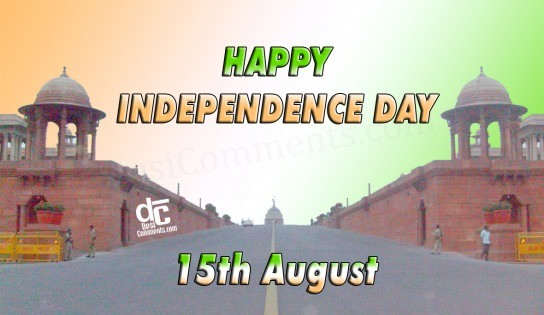
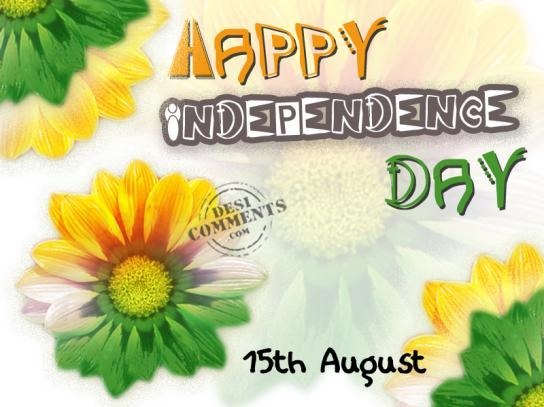
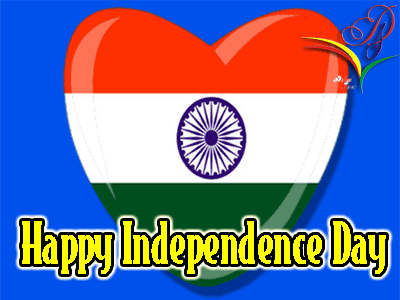
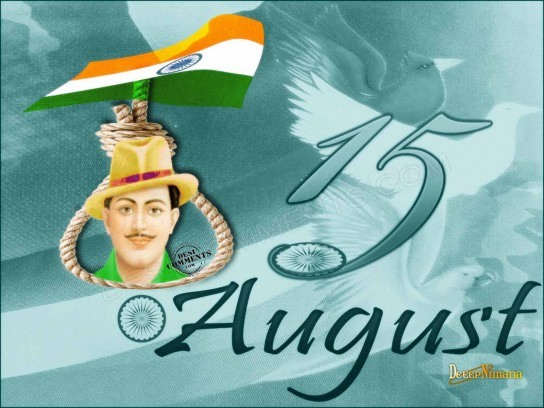
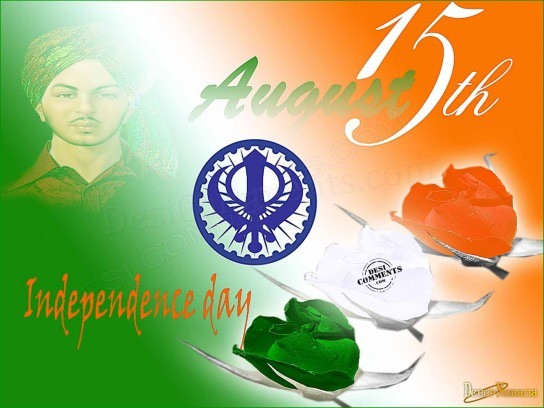
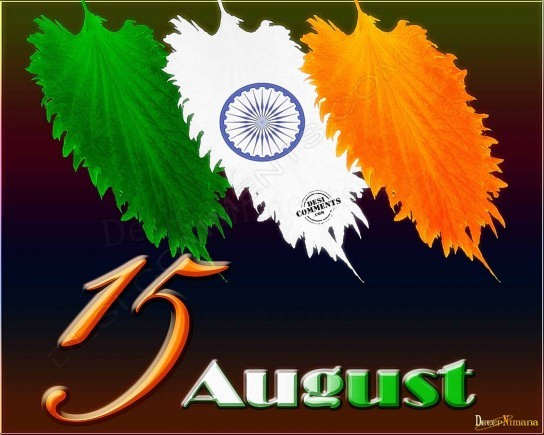
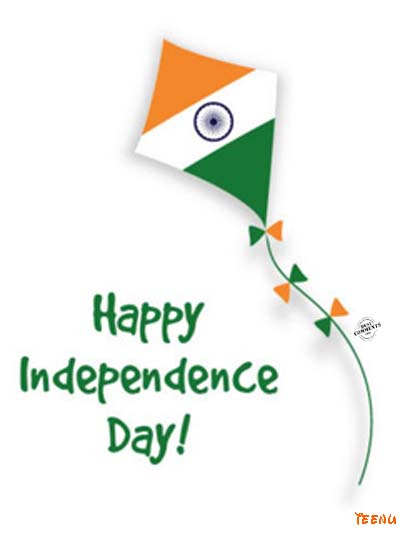

Nenhum comentário:
Postar um comentário